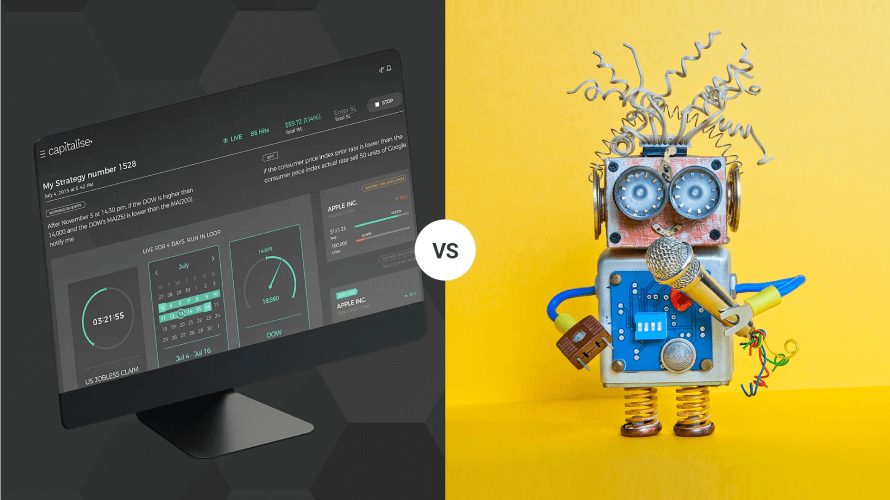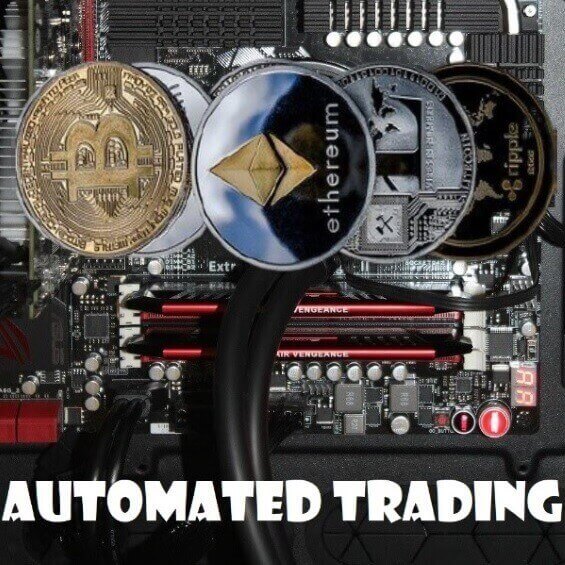Recommended News For Selecting Forex Backtesting
Wiki Article
What Is The Difference Between Technical Traders And Fundamental Traders In Automated Trading Systems?
Two distinct types of traders approach the markets in different ways the fundamental and technical traders. Technical traders and fundamental trader are also able to use various data analytics and technology in automated trading systems. To make informed trading decisions the focus of fundamental traders is on financial and economic data. This includes interest rates, economic indicators as well as corporate earnings. They believe that changes in these factors drive market movements and that knowing the drivers is crucial to make informed trading decisions. Technical traders on the other using chart patterns as well as technical indicators to make their trading decisions. They think that patterns and previous market activity can provide insight into the future direction of markets. Technical analysis is therefore more effective than traditional analysis. Automated trading systems could have fundamental traders more inclined to employ an algorithm that includes analysis and data from the fundamentals. Technical traders, on their part, might use algorithms that include technical indicators or chart patterns in their decision making process. It is evident that fundamental and technical traders have different approaches to the markets. These differences may also result in different kinds of automated trading platforms that they employ and with fundamental traders more likely to utilize systems that combine basic data and analysis while technical traders are more inclined to use systems that integrate technical analysis. See the top rated best trading platform for site recommendations including best cryptocurrency trading bot, algo trading software, backtesting tradingview, trading divergences, automated crypto trading bot, forex backtest software, emotional trading, cryptocurrency trading, forex backtest software, position sizing trading and more.

Simple And Exponential Moving Averages In Automated Trading Systems
Exponential Moving Average (EMA) and Simple Moving Average (SMA) are two popular indicators of technical quality in automated trading systems.The Simple Moving Average (SMA) is calculated by adding the closing prices of a currency pair for a specified number of periods and then dividing the result by the number of time periods. A 50-day SMA could be determined, for instance by adding the closing prices of currency pairs for the last 50 days and then multiplying the result by 50.
The Exponential moving average (EMA) which is like SMA, gives more weight to the current prices when calculating. The EMA is calculated by taking the weighted average of closing prices and the weight that is given to the most recent prices higher than the weight given to older prices. This is due to the fact that the EMA reacts faster to market changes that the SMA.
Moving averages are utilized in trading software that automates trades to identify trends and generate buy and sell signals. It is common to purchase when the price is over or below the median, and sell when it crosses below. This trend is verified with the help of moving averages. A fluctuating or rising moving average can indicate an upward trend.
In the end, EMA and SMA are common technical indicators within automated trading systems. They can be used to detect trends, generate signals for buying and selling and to confirm trends. The individual's goals and preferences will decide which indicator to use and which one they prefer, which makes SMA more reliable and adaptable to market fluctuations than EMA. View the most popular free crypto trading bot for blog advice including crypto backtesting, crypto backtesting platform, best trading bot for binance, trading algorithms, backtesting trading strategies free, best crypto trading bot 2023, backtesting tradingview, algo trading software, automated crypto trading, trading with indicators and more.

What Is Bollinger Bands? For Automated Trading Systems?
Bollinger Bands are a technical indicator commonly used for automated trading systems. They consist of three lines- a simple moving average (SMA) and two outer bands, which are plotted with a certain number of standard deviations in relation to the SMA. The volatility of an asset is the determining factor for the standard deviations utilized in computing the bands that are outside. Bollinger Bands are commonly used to identify market conditions changes in automated trading platforms. If the price goes beyond the outer bands it could be a sign of an inverse trend or an increase in volatility. Conversely, when the price remains within the outer bands, it may be a sign that the market is settling and an upcoming trend change is not as likely. Bollinger Bands can be used in conjunction with momentum oscillators and other technical indicators to generate buy/sell signals. Common strategies include buying when prices are at the lower Bollinger bands and selling when it crosses higher Bollinger bands. Bollinger Bands are an essential technical indicator used in automated trading systems. They are used to detect the changes in market conditions and give buy and sell signals. The use of Bollinger Bands or non-use will depend on the specific goals and requirements of the trader as well as their approach to trading and style. Take a look at the most popular divergence trading for blog tips including backtesting trading strategies, trade indicators, trading platform cryptocurrency, crypto backtesting platform, best cryptocurrency trading bot, best indicator for crypto trading, backtesting trading, backtesting platform, automated trading bot, automated trading platform and more.

What Is Adx And How Does It Work To Obv (Onbalance Volume) Or Regression
The Average Directional Index (ADX) is a common indicator employed in technical analysis to measure the degree of strength of an economic market. It is a measure of the degree of strength of a trend. It's determined by the difference between two exponential moving averages of the asset's high and low prices. When using automated trading platforms, ADX is often used in combination with other indicators, including the +DI or -DI to produce buy and sell signals. However, On-Balance Volume (OBV) is a momentum indicator which uses fluctuations in volume to assess the strength of an ongoing trend. OBV and ADX can be utilized in automated trade systems to produce signals for entry/exit positions. However, they also provide information that is complementary and provide different indicators of market activity. OBV is an indicator of buying or selling pressure. It tracks the cumulative volume and buy-and-sell transactions. ADX measures the strength and direction of an overall trend. Regression, however is a technique used in statistical analysis to describe the relationship between dependent variables with any or all of the independent variables. Regression analysis is a technique that allows traders to identify the relation between two or more variables (e.g. prices or volume) or to identify patterns and patterns in data. These tools can be utilized in automated trading systems to create signals, and to understand the trends and relationships in the market and make educated trade choices. The specific style of trading and approach will determine which tools they employ.